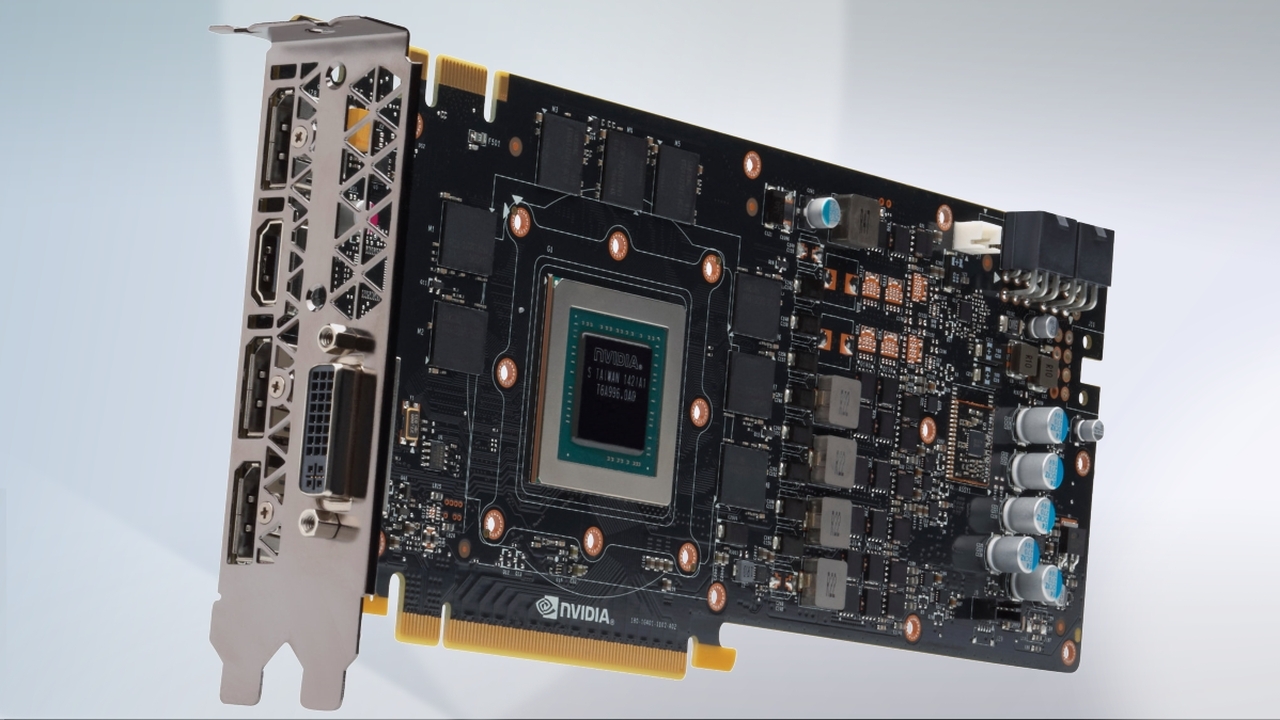Why you can trust TechRadar
We liked
The efficiency of the new Maxwell GM 204 GPU is the most striking thing, in both the GTX 980 and its GTX 970 brethren. This is essentially a mid-range class GPU - generationally equivalent to the GTX 770 - but it's able to best the very top of the Kepler workstation GPU. Even if it's only by a relatively small amount.
But there is something you can do about that. Because the TDP is just 165W compared with the 250W TDP of the GK 110-based cards, there is a lot more power to be gotten out of the GPU with a little judicious overclocking.
We managed to boost the clocks up to 1,480MHz from a base of 1,126MHz and that generally gained us another 10% frame rate increase for free. And that's still remaining below the power draw of an overclocked GTX 780 Ti and around the same sort of temperatures too.
There are also some extra features that accompany the new Maxwell cards too, offering either an image fidelity boost if you've got performance to burn or, on the flip side, a performance boost without impacting image quality.
The Dynamic Super Resolution (DSR) is initially being locked to the GTX 980 but is likely to be rolled out across Nvidia's other cards in the next few months. It basically allows the GPU to render at a higher resolution than the connected screen can display. Using some funky filtering techniques Nvidia can then squeeze that down to fit a lower-res display while still boosting image quality.
That does impact performance, as if you're rendering at 4K you'll still get that performance hit even if it is being filtered down to a 1080p screen.
The bonus is that it means you've got extra image quality settings available if you're already maxing the system settings on a ropey console port. Cough...Dark Souls 2...cough.
Multi-Frame Anti-Aliasing (MFAA) is the other end of the spectrum. It's a new anti-aliasing technique which allows you to get the image quality of a performance-hitting 4x MSAA setting while only knocking frame rate back to the speeds you get from 2x MSAA.
When you're shifting up to 4K resolutions that sort of performance boost without an image fidelity hit is most welcome.
We disliked
We're always disappointed with the price of the high-end graphics card market these days. We're old enough to remember the days when £300 / $400 was the top of the GPU tree, but those ultra-enthusiast cards have hiked up the ceiling to the point where a £430 / $549 release seems almost reasonable.
The knowledge that Nvidia has priced the GTX 980 at the same point as the more-expensive-to-produce GK 110-based cards also rankles a touch. Nvidia is going to be making serious margin on these chips. They're far smaller and less complex than a GK 110 GPU and the 28nm production process has been around long enough that we suspect the chip yields are going to be incredibly solid.
But this is not the first time it has done this. The GK 104 GPU tipped up at the same price point with the GTX 680, so there is a precedent.
And then there's the production process itself. It's not Nvidia's fault at all - there have been issues in the cost and yields of dropping down to GPU production at the smaller 20nm production process Maxwell was originally meant to appear on.
But seeing the efficiency of the 28nm version makes us go rather moist in anticipation of the 20nm Maxwell refresh that's surely going to appear sometime towards the end of 2015.
Final verdict
There is far more of a swagger within Nvidia these days and the combined boost of having its Tegra TK1 SoC in the next Nexus device as well as the serious efficiency and performance of its new Maxwell-based GPUs are surely the catalysts.
And it's right to be proud of its new graphics card. The GeForce GTX 980 is an impressively powerful, overclockable and energy-conscious card. It's effectively a mid-range GPU capable of beating the best of the last generation in a straight up frame rate fight, while keeping its demands sensible.
If you were hoping for a huge performance lead over the top cards of the last Kepler generation you might be a touch disappointed, but the combination of energy efficiency and the extra features - as well as the promise of DirectX 12 improvements really taking Maxwell's best parts even further - makes it an impressive overall package.
If we're honest the cheaper, but still high-performance, GeForce GTX 970 is probably our favourite card of the two. That GPU has the beating of AMD's top R9 290X and comes in at an incredible price point.
But if you want the performance at 4K resolutions, and have the cash, the Nvidia GeForce GTX 980 is the high-end card for you.
